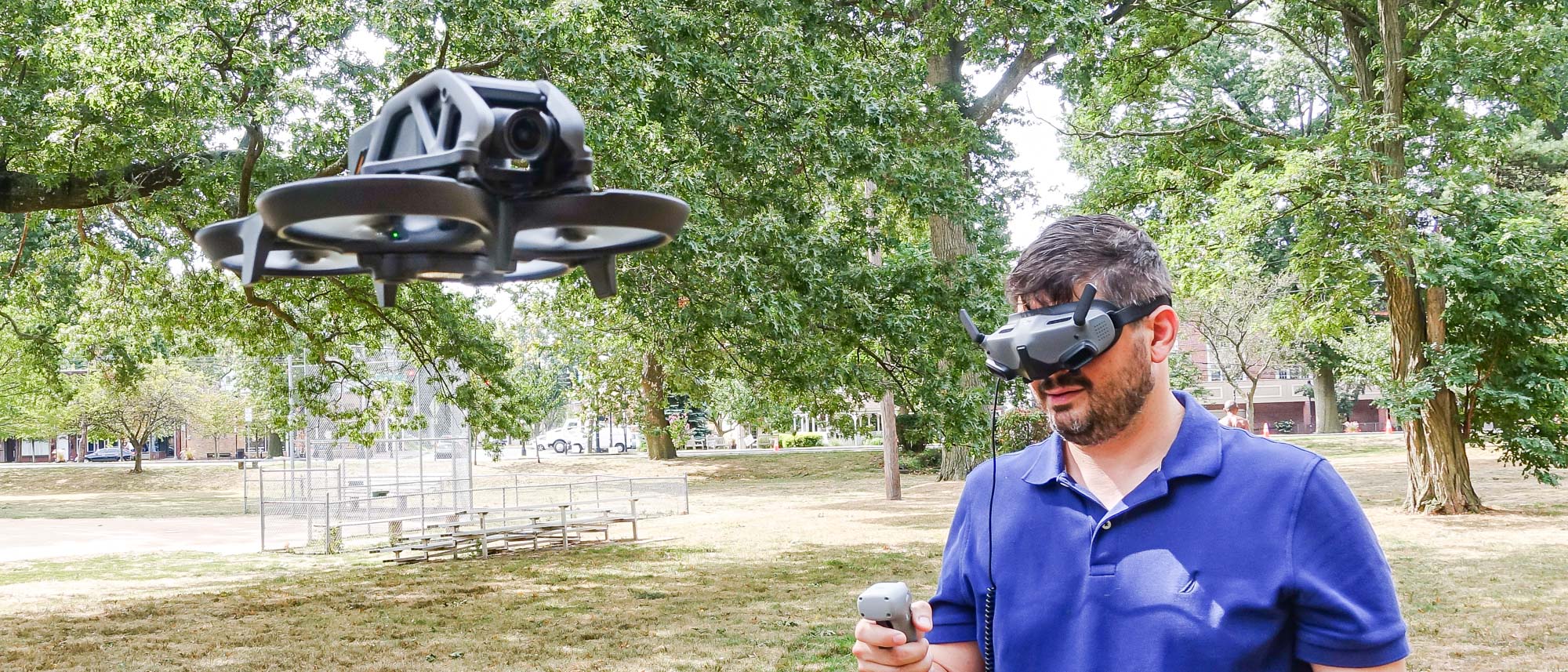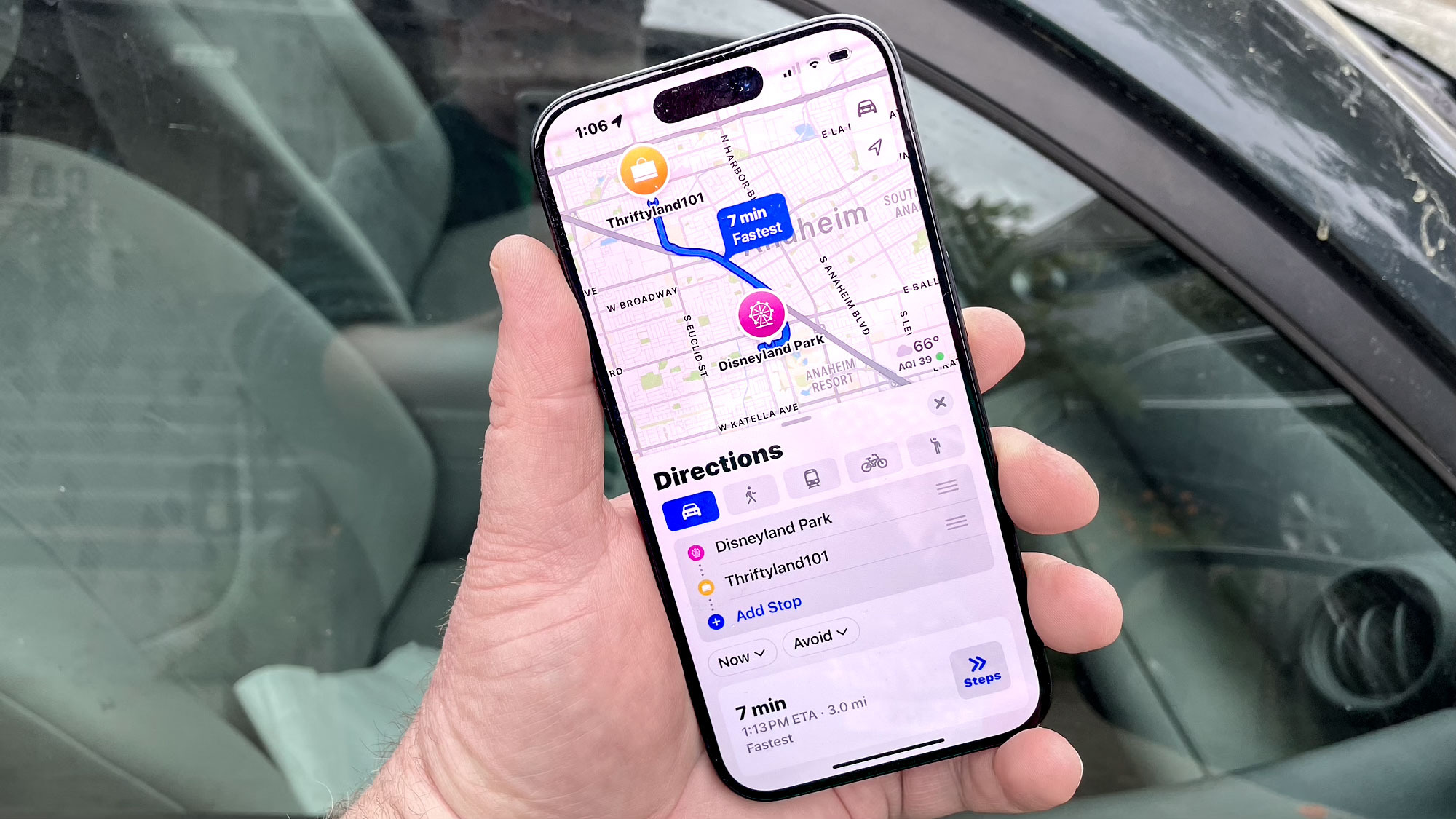Tom's Guide Verdict
The DJI Avata is great for those who want to get a taste of drone racing, but don’t want to build a drone from scratch. However, if you’re looking for a drone for videography, look to DJI’s other models.
Pros
- +
Fast
- +
Easy to fly
- +
Everything included
Cons
- -
Goggles somewhat uncomfortable
- -
Short flight time compared to other DJI drones
- -
Requires extra controller for manual mode
Why you can trust Tom's Guide
Size: 7.1 x 7.1 x 3.1 inches
Weight (w/battery): 14.3 ounces (405 grams)
Camera: 48MP, 1/1.7 CMOS
FOV: 155 degrees
Max video resolution: 4K/50-60 fps
Max photo resolution: 4000 x 3000
Battery: 2420 mAh
Flight time: 18 mins
The Avata is the second DJI drone to try to capture the FPV racing segment of the drone market. Unlike most of its other drones, whose primary focus is capturing stunning videos, the DJI Avata is designed to be nimble and fast. Really fast.
Coupled with a pair of FPV goggles — which deliver a latency-free image right to your eyeballs — the Avata is the closest you can get to flying without getting a pilot’s license. However, with a starting price of nearly $1,400 (AU$1,989) all-in, it’s a real investment, so you have to be really curious about drone racing — and not want to build your own — if you’re thinking about picking up the Avata. But you should read the rest of our DJI Avata review before you make up your mind.
DJI Avata review: Price and availability
The Avata will be available from Aug. 30 at DJI.com and other major retailers. It’s being sold in three configurations:
DJI Avata ($629 / AU$799): This configuration does not include a remote controller, goggles, or motion controller, and is meant for DJI owners who already have these accessories.
DJI Avata Pro View Combo ($1,388 / AU$1,989): This includes the drone, the DJI Goggles 2, and the DJI Motion Controller. This is the configuration I tested.
DJI Avata Smart More Combo ($1,168 / AU$1,629): This includes the drone, the motion controller, and the DJI FPV Goggles V2 — DJI’s larger, older FPV goggles.
If you want to access the Avata’s Manual mode — and its top speed of 60 MPH — you’ll need to purchase the FPV Remote Controller 2 ($199 / AU$229, sold separately).
In addition, DJI is selling a Fly More kit for $279 (AU$339), which includes two extra batteries and a charging hub. If anything, I would recommend this, given the Avata’s short battery life. On their own, additional batteries cost $129 (AU$169) each.
DJI Avata review: Design
The Avata looks unlike any other drone made by DJI. For starters, its four rotors are below the main body, and are protected by shrouds; while you can purchase optional, removable propeller guards for its other drones, the ones on the Avata are fixed in place.
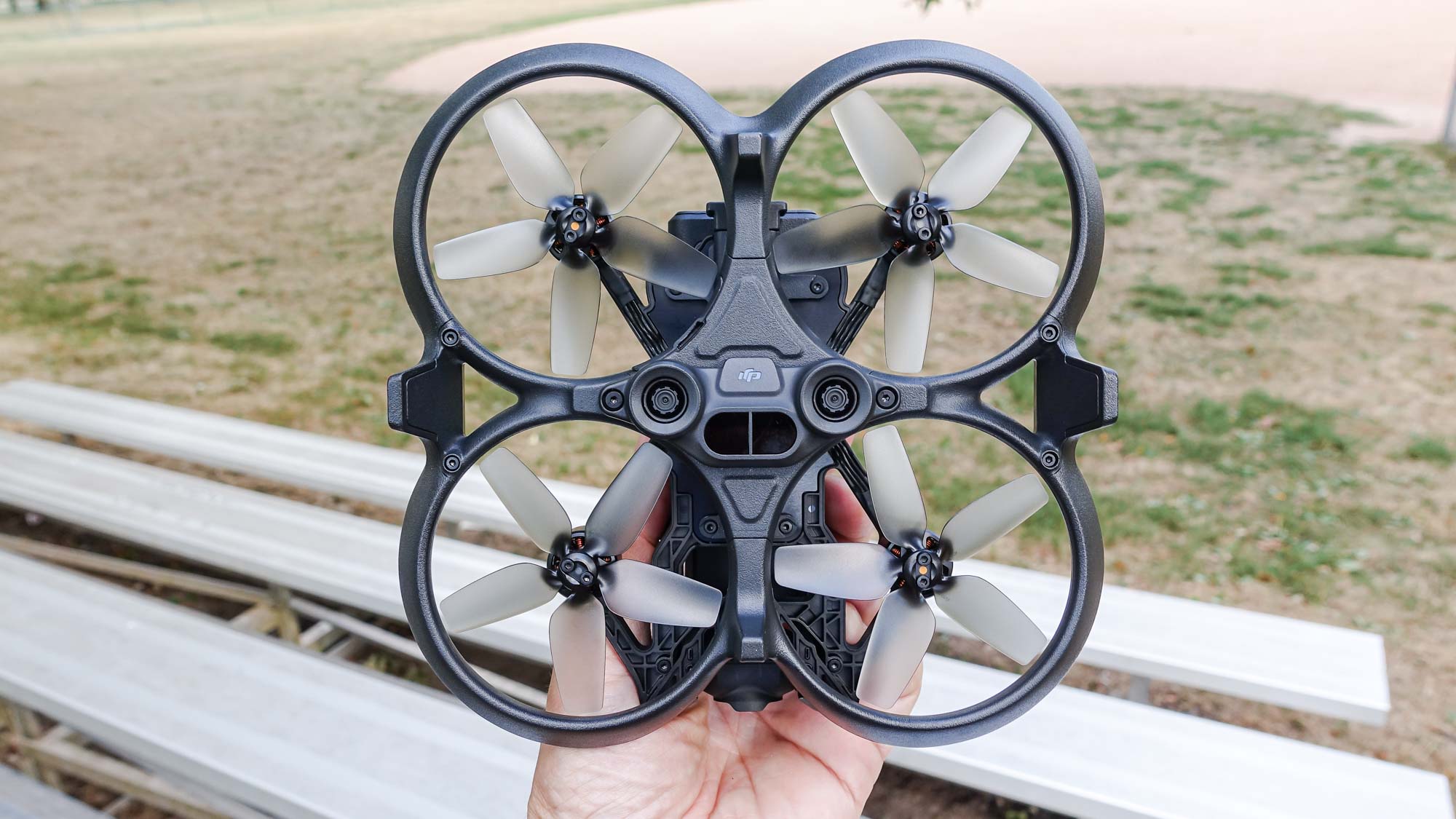
Instead of a light gray body as is standard with its other models, the Avata has a lattice-like dark gray frame; this cuts down on the weight, to be sure.
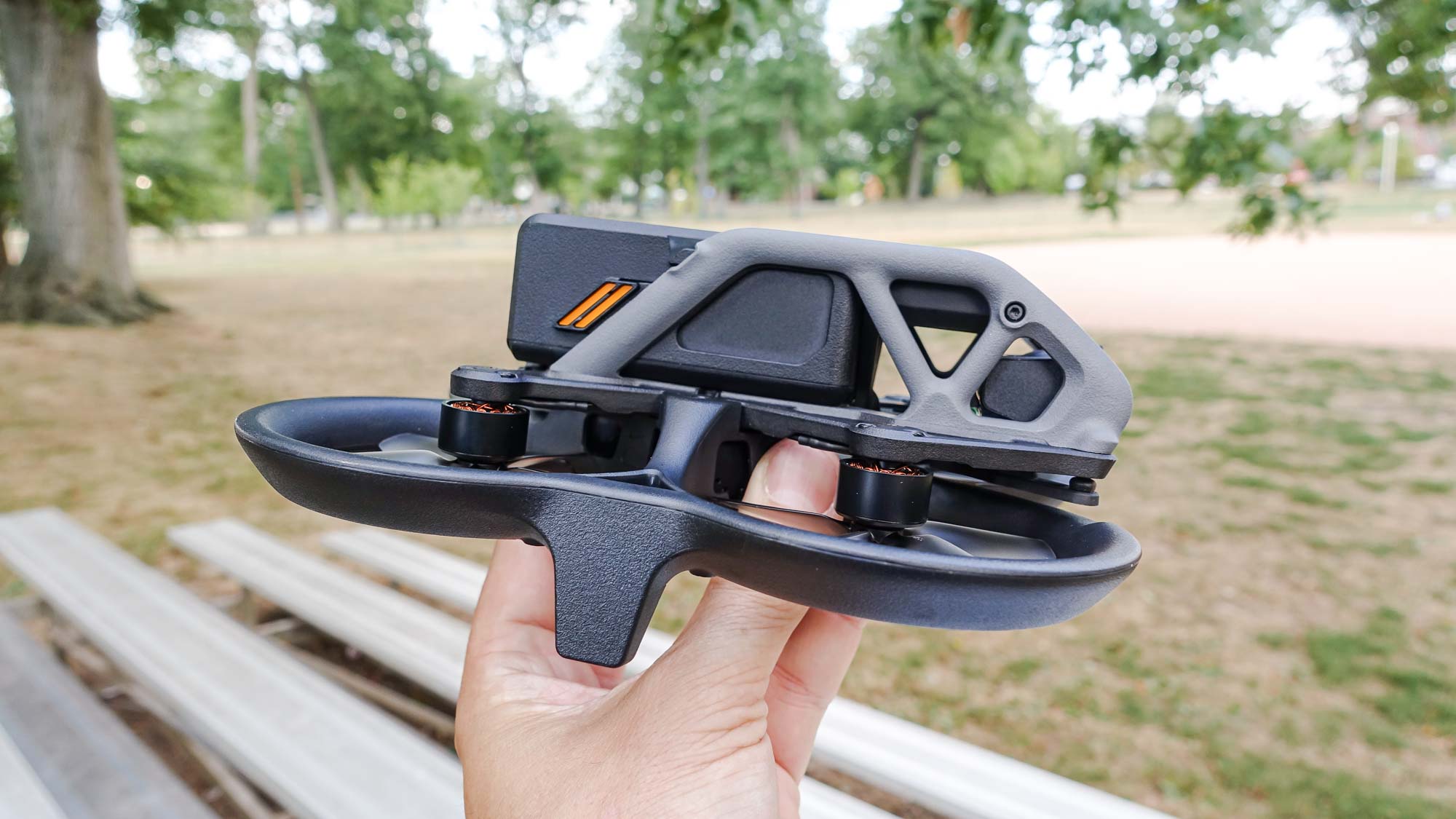
In order to cram everything in, there’s one weird design choice: a USB-C port and a microSD card slot are crammed inside one of the propeller shrouds. It’s a little bit of a pain to access, as you have to move the propeller out of the way.

At 14.3 ounces (405 grams) with its battery, the Avata exceeds the FAA’s limit of 250 grams, which means you’ll have to register this drone with the feds. The Avata has 20GB of internal storage, but you can insert a microSD card for additional storage.
DJI Avata review: Goggles
The goggles that came with my review unit were the DJI Goggles 2, not to be confused with the older DJI FPV Goggles V2.
What’s the difference between the two? For starters, the FPV Goggles V2 are a bit larger, and have four antennae poking out of the front. In terms of specs, the V2’s have a lower resolution but higher framerate than the Goggles 2 — 810p/120fps for the V2 versus 1080p/100fps for the Goggles 2.
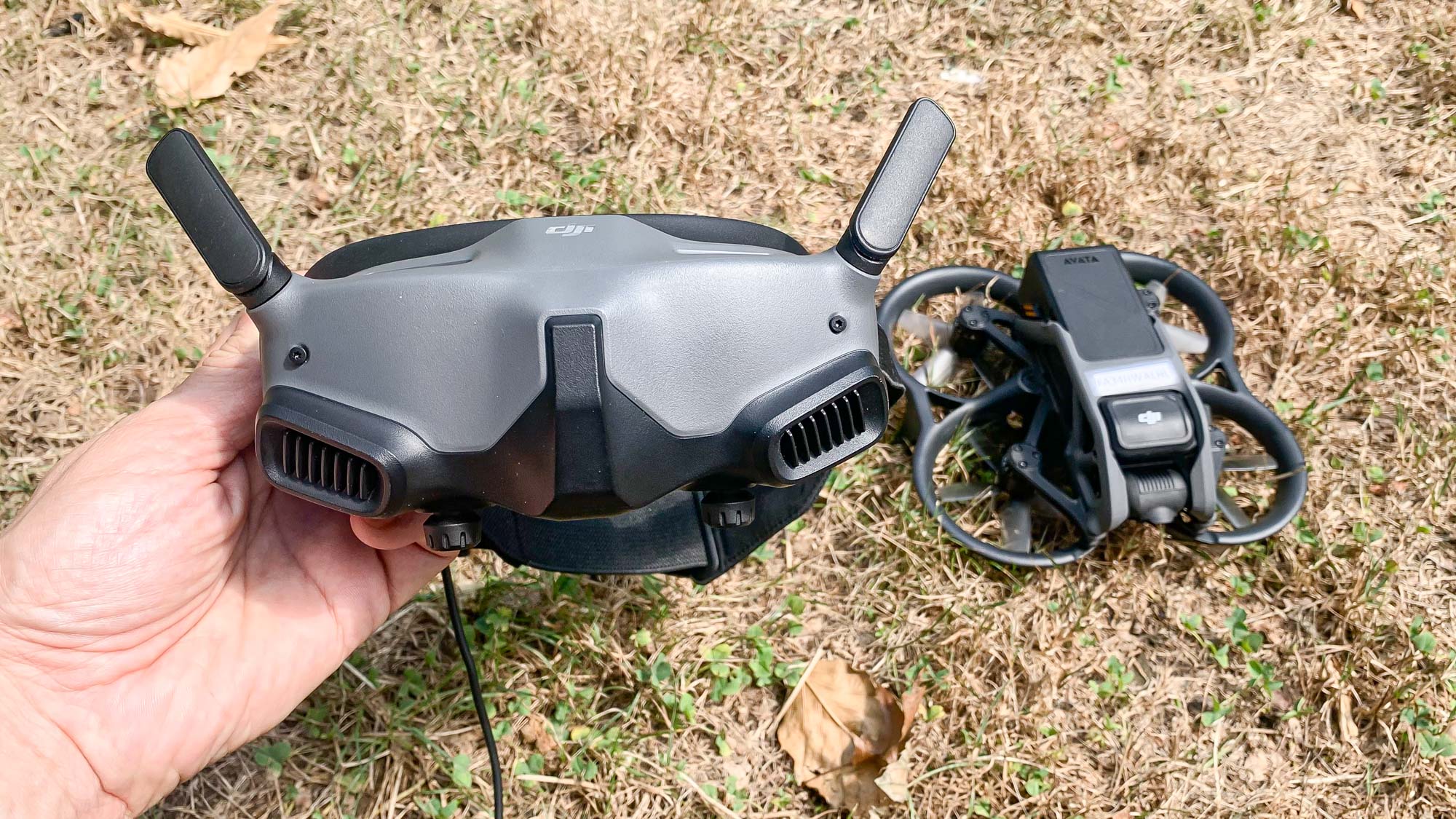
It’s been a while since I’ve worn the V2 goggles (for my DJI FPV review), but I recall them being more comfortable to wear than the Goggles 2 that came with the Avata. This newer pair didn’t conform as nicely to my forehead, which made it a bit uncomfortable — some add-on padding would go a long way. However, I didn’t feel as queasy after using the V2 goggles as I did after using the Goggles 2.
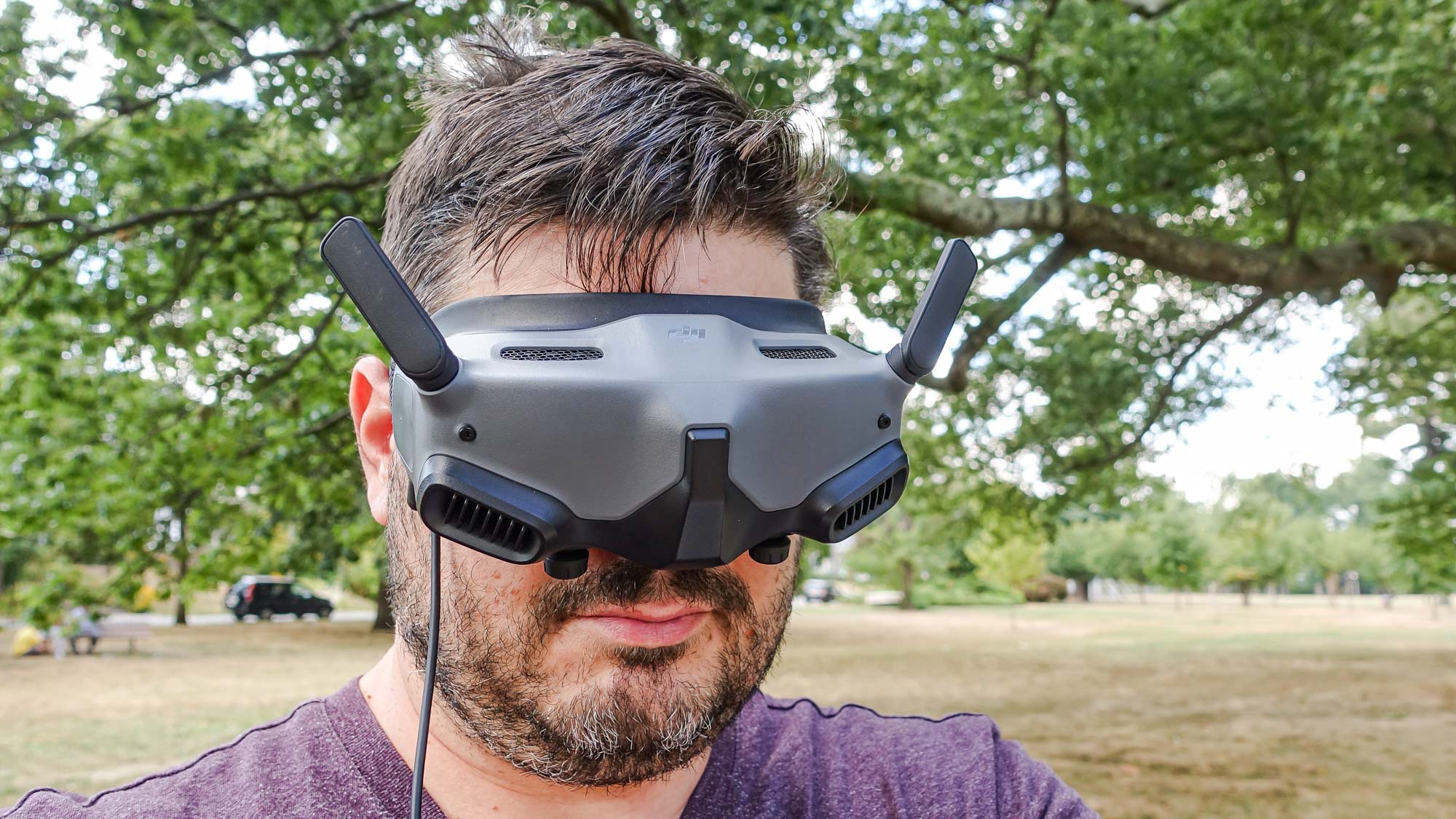
Two knobs on the bottom of the Goggles 2 let you easily adjust the lenses so they’re in focus and aligned properly, but a little jostling — such as pulling the goggles out of a bag and fitting them to your head — would cause them to move out of place. A touch-sensitive panel on the right side of the goggles lets you scroll through menus and select items by tapping. I found it was large enough to navigate by touch.
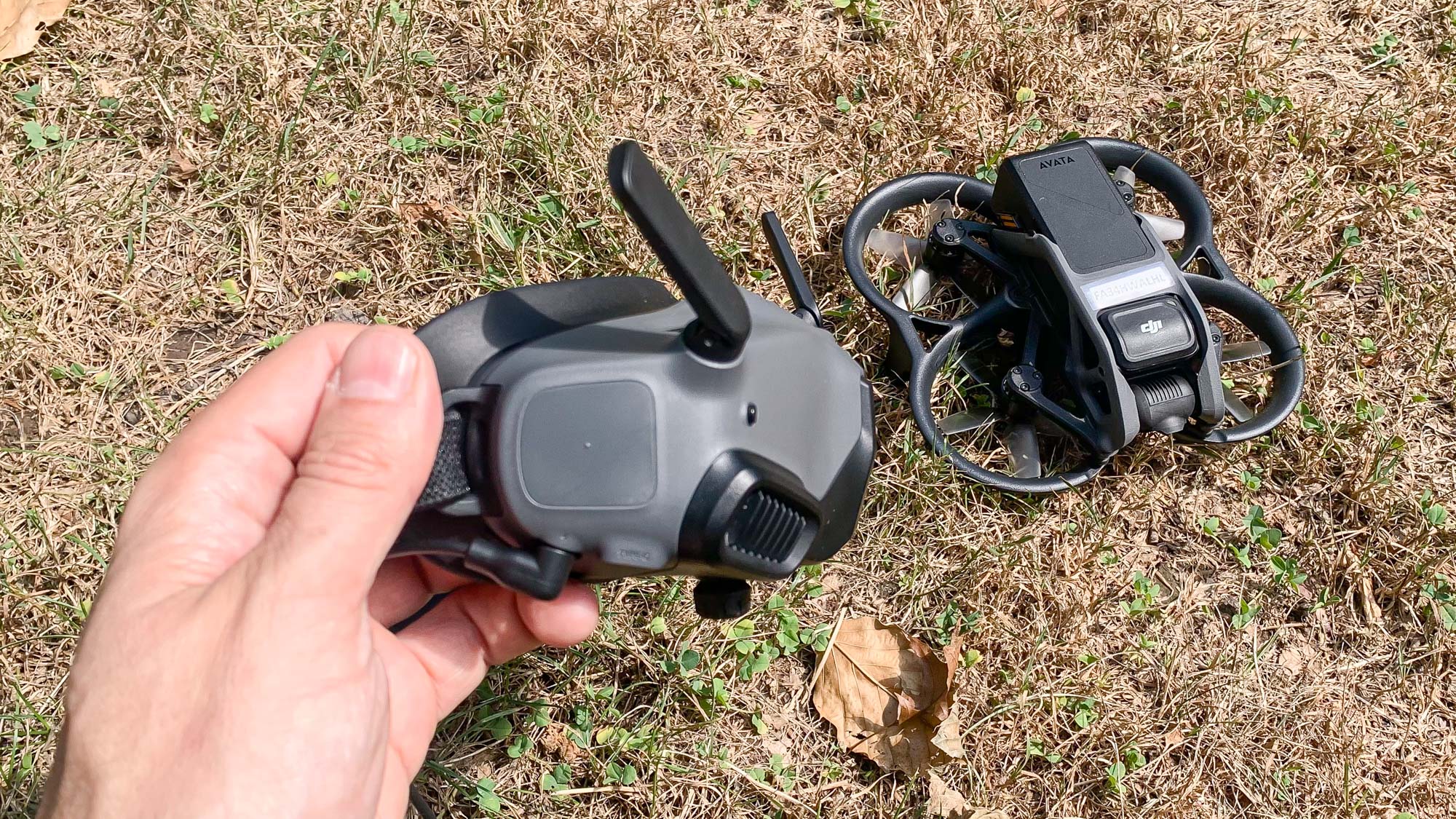
The goggles have a microSD card slot so you can record video streamed from the drone. There’s also a headphone jack. The goggles are powered by a small battery, which must be connected by a long wire to the headphones. I wish there was some sort of clip on the battery itself, so that you could attach it to the back of the headstrap, rather than having it dangle.
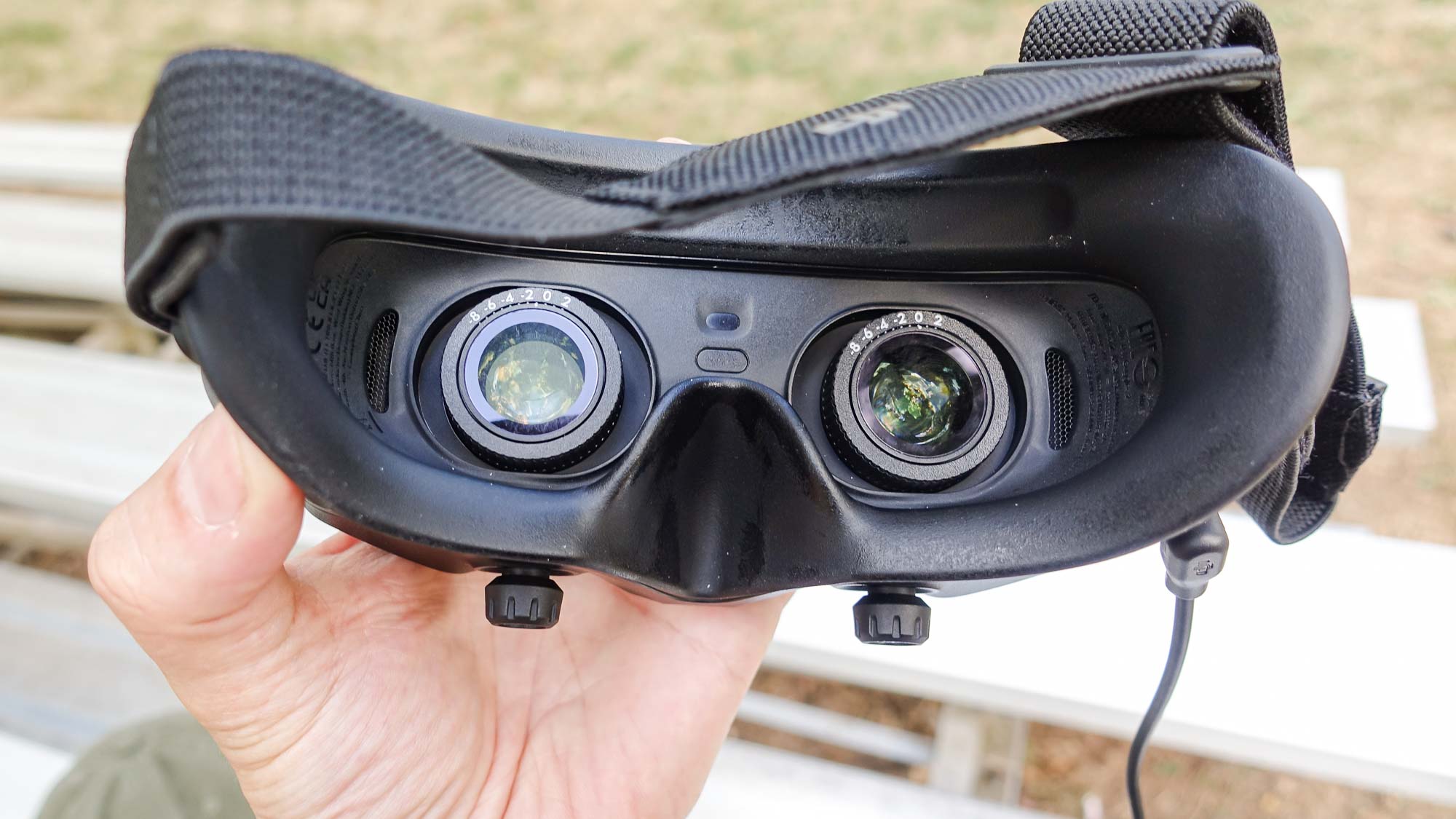
The dual micro OLED screens inside the goggles were very bright and sharp, and, thanks to the high transition rate from the drone, I never had any trouble piloting the drone. It was practically instantaneous, with no dropouts or hiccups at all.
DJI Avata review: Motion controller
DJI sent me the drone with the motion controller, which acts like a joystick; you simply twist your wrist to move the drone up and down and left or right. Like piloting an aircraft, it feels pretty natural very quickly.
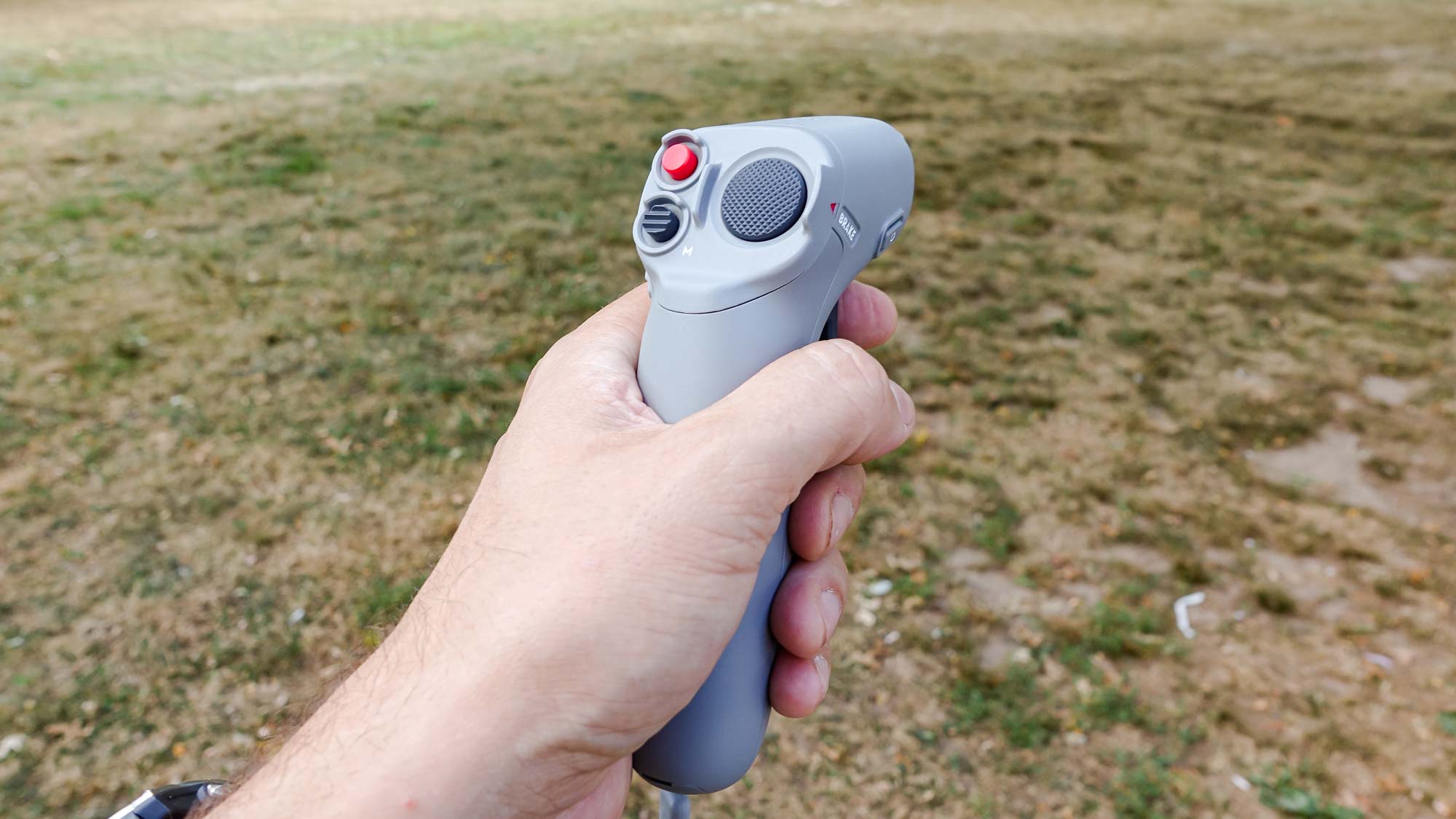
A trigger on the front controls the speed of the drone, while three buttons on the thumb rest handle the camera, as well as an emergency stop button.
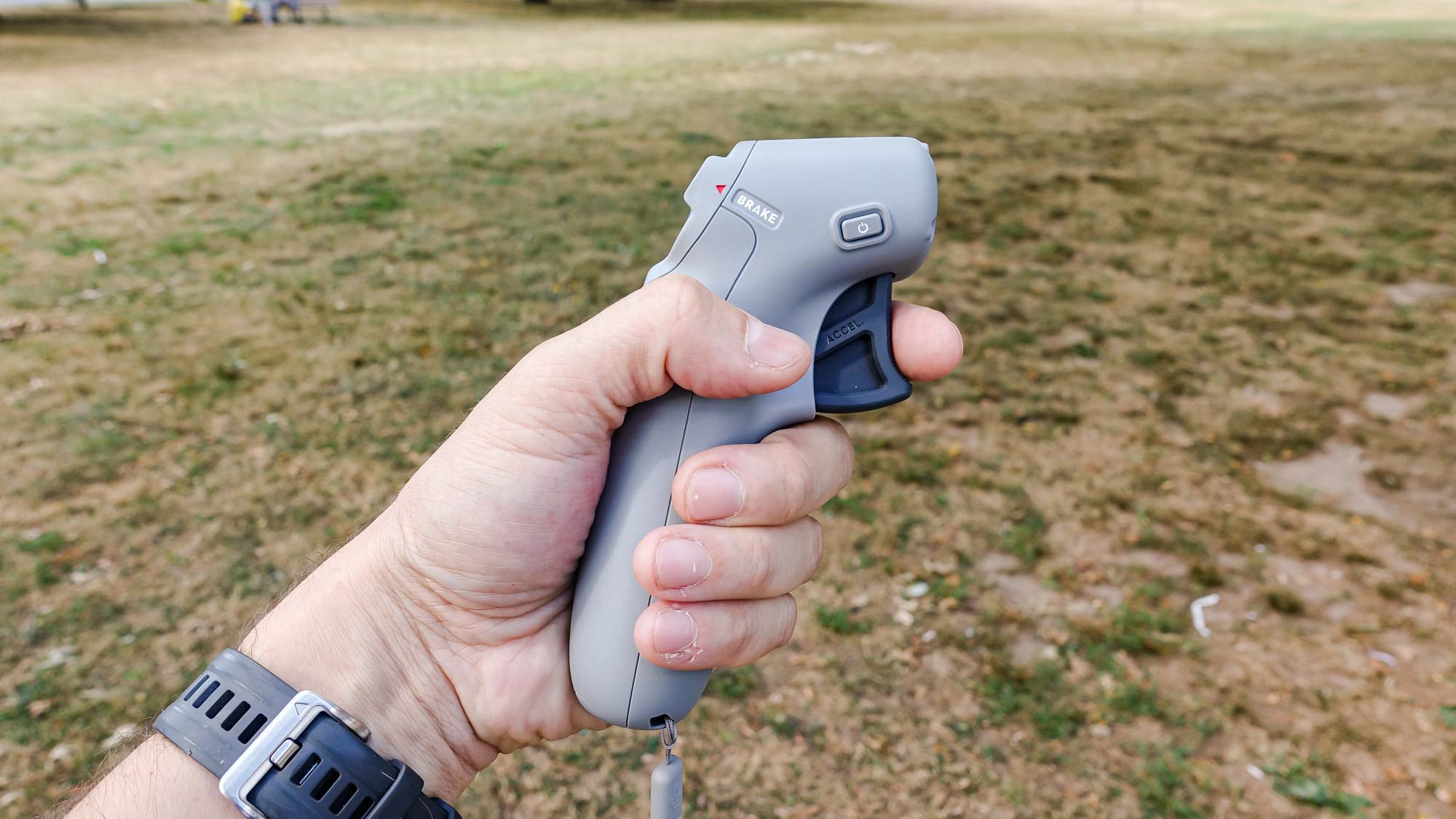
I found the motion controller to be very responsive to just the slightest touch, but also very intuitive, especially if you’ve used a flight simulator. In no time I was weaving the Avata around trees in a local park, terrifying the squirrels.
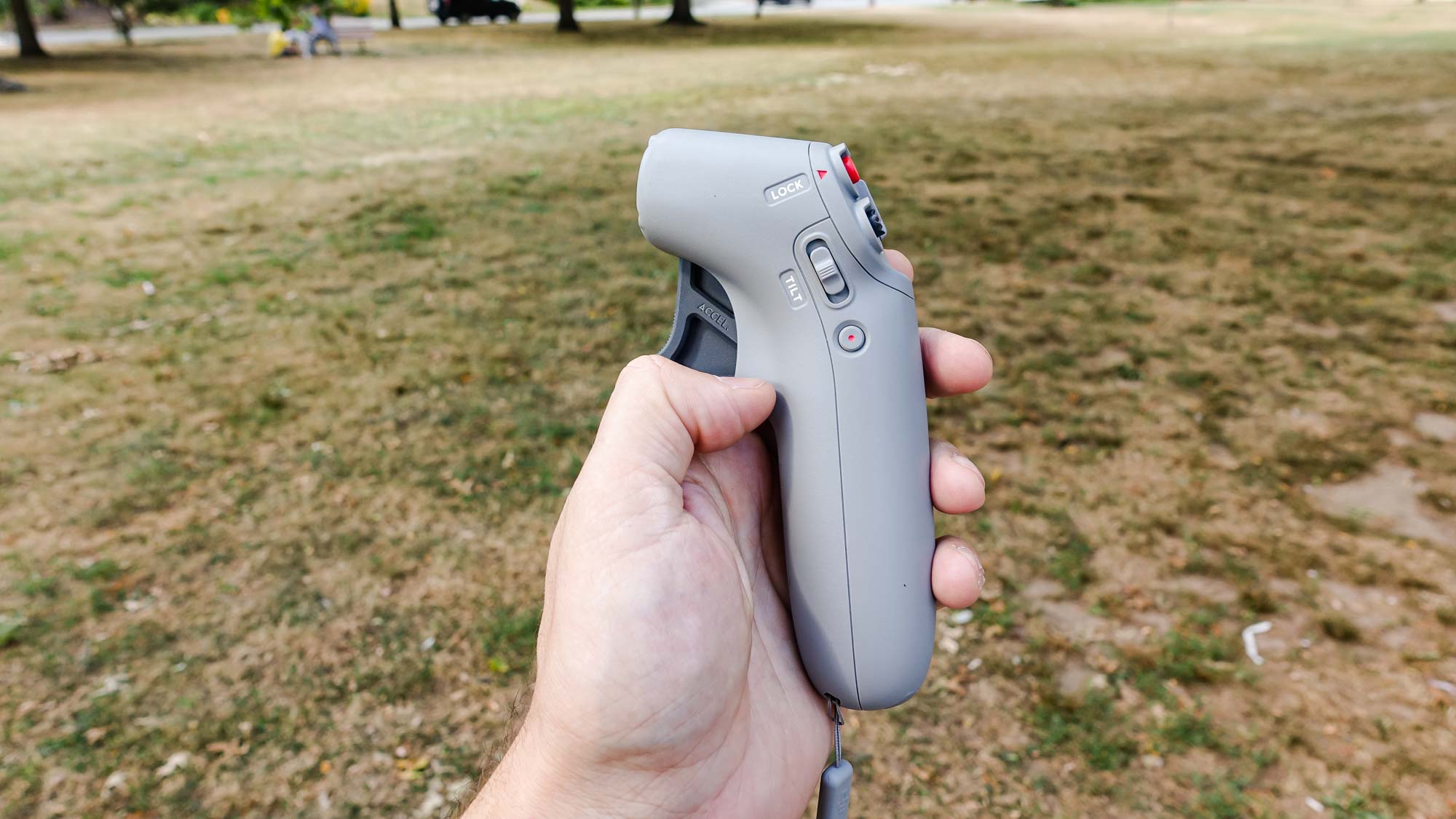
DJI Avata review: Performance
When I first launched the Avata, I was surprised at how much louder it was than other DJI drones. I was able to hear it from a much greater distance, and the whine of its five-bladed rotors had a much higher pitch, too. The better for others to hear you coming, I guess.
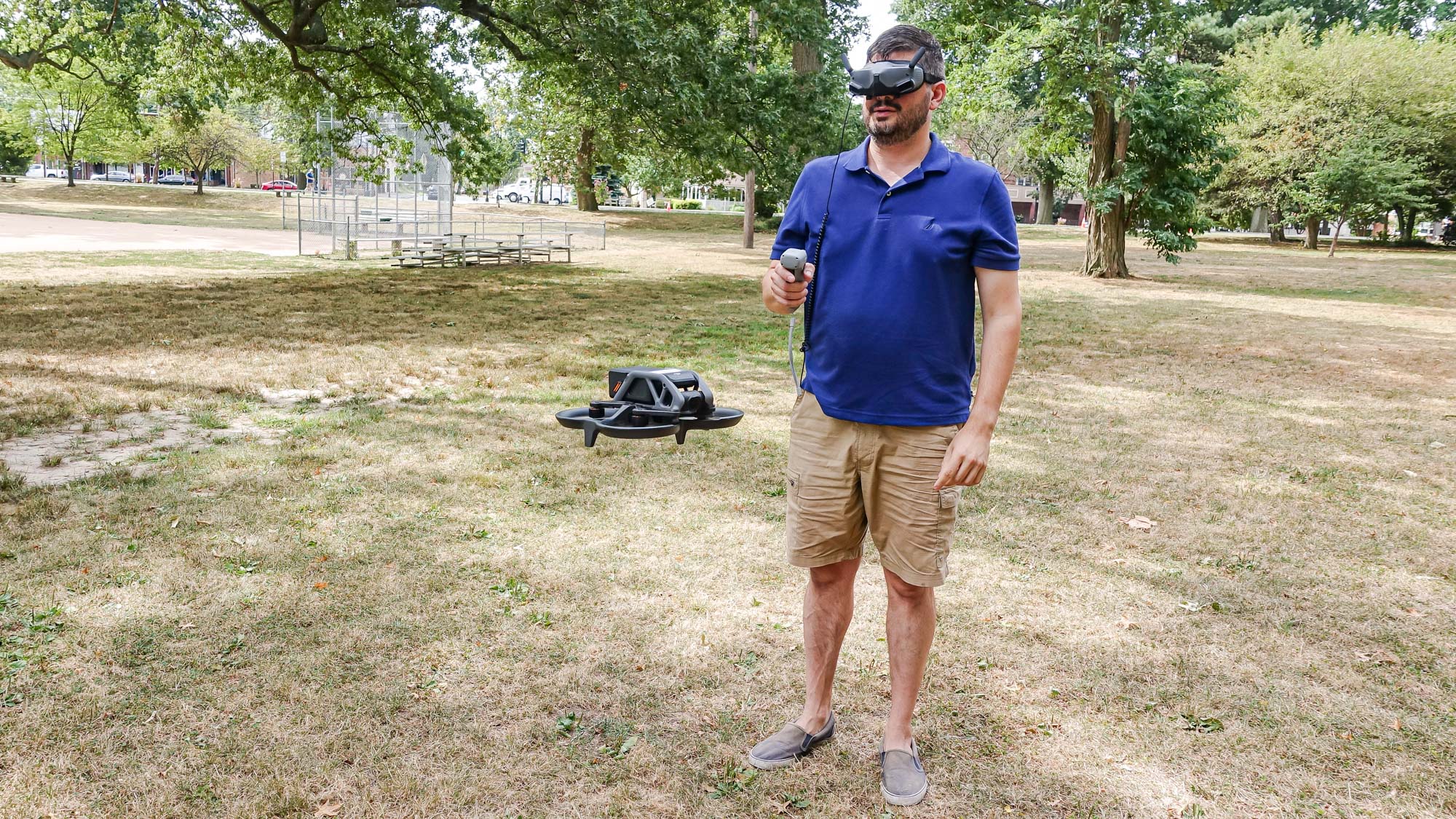
In Manual mode, the Avata has a top speed of about 60 miles per hour; Sport mode limits it to 31 MPH, and Normal mode keeps it to about 18 MPH. The Avata’s top speed isn’t as fast as the DJI FPV drone — which can go an absurdly fast 87 MPH — but the Avata was plenty quick for me, even in its Sport mode. You’ll also need the FPV Remote Controller 2 (sold separately for $199) if you want to use Manual mode.
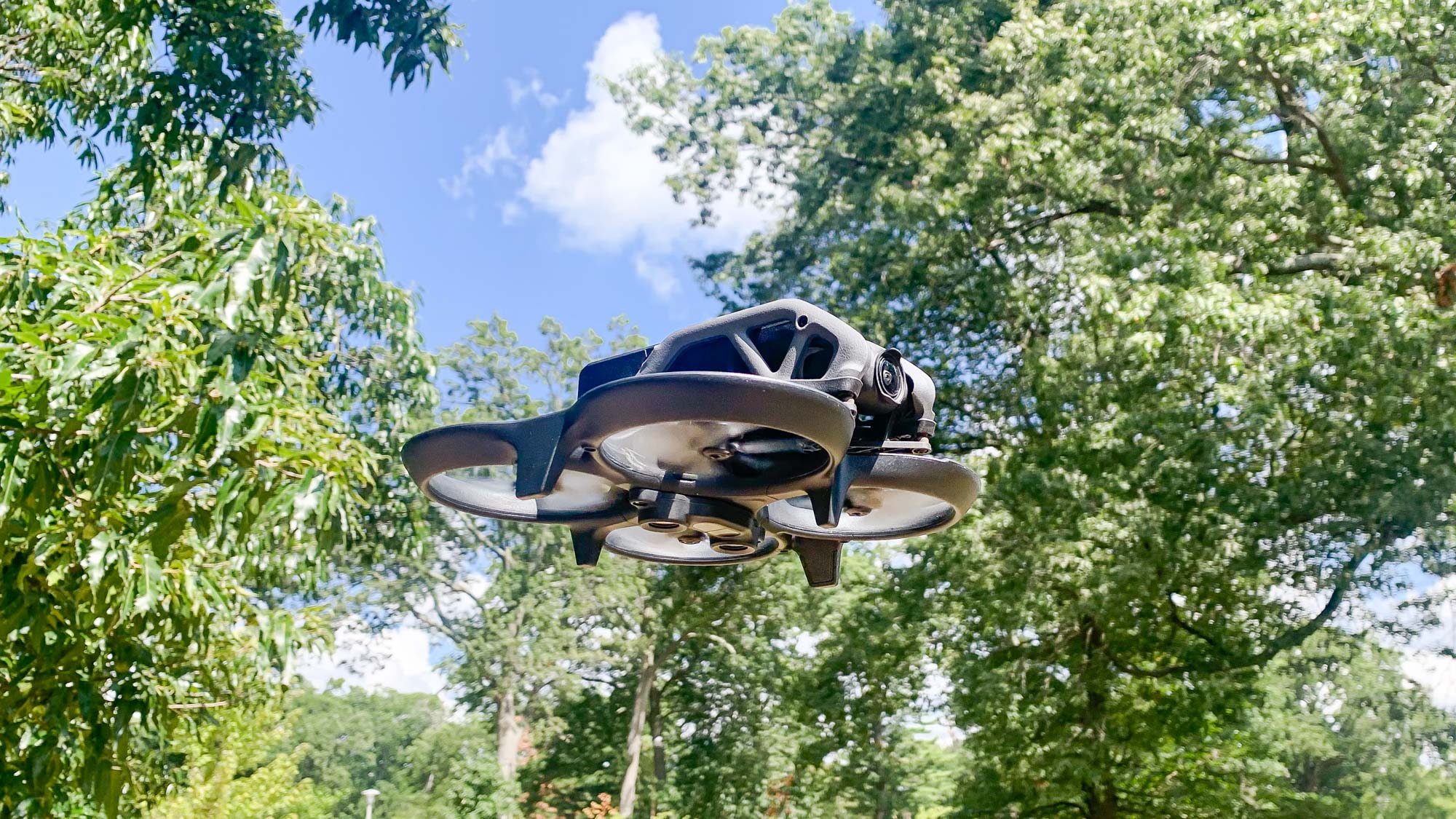
Front and downward-facing sensors help keep the Avata from crashing into things, but you don’t get the 360-degree sensor array as on some of DJI’s videography-focused drones, such as the Mavic 3.
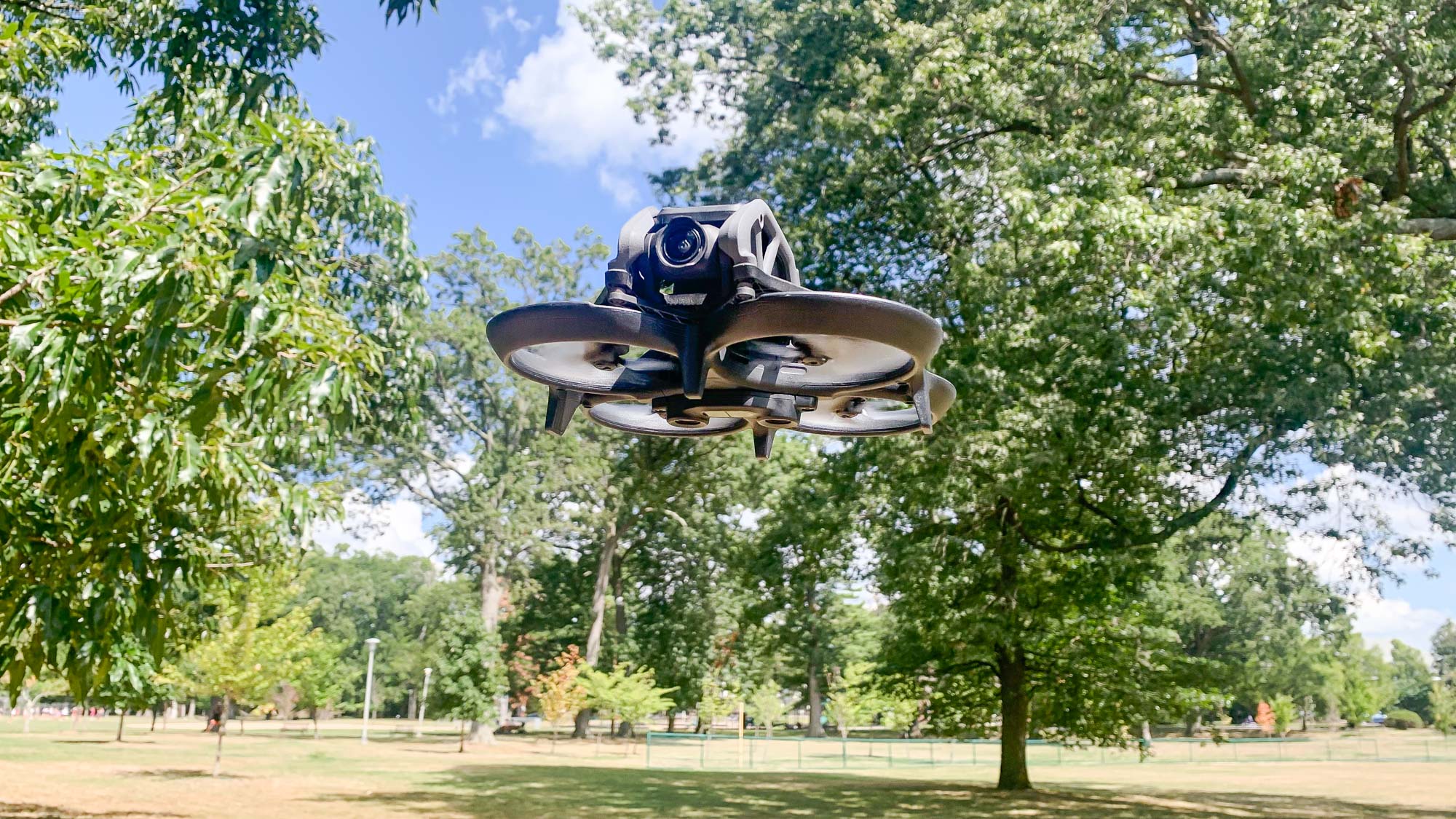
While the Avata is nearly twice as heavy as the DJI Mini 3 and Mini 2, the Avata was still pushed around a bit by the wind — which was made more noticeable by the fact that the Avata’s camera is on a 2-axis gimbal, rather than the 3-axis gimbal found on DJI’s camera drones.
Photos and videos taken using the Avata’s 48MP, 1/1.7 CMOS sensor were excellent, but, as this drone’s primary purpose isn’t videography, it lacks many of the video- and photo-centric features you’ll find on the company’s other drones. For example, there’s no custom flight modes or ability to zoom. However, you can adjust things such as exposure and shutter speed.
DJI Avata review: Battery life
One drawback to a fast, high-performance drone is that its battery life is considerably shorter than standard models. While the Avata’s flight time of around 18 minutes is longer than a typical FPV drone, it’s less than half that of DJI’s other drones. Still, it’s about the same as the DJI FPV, which has a 20-minute flight time.
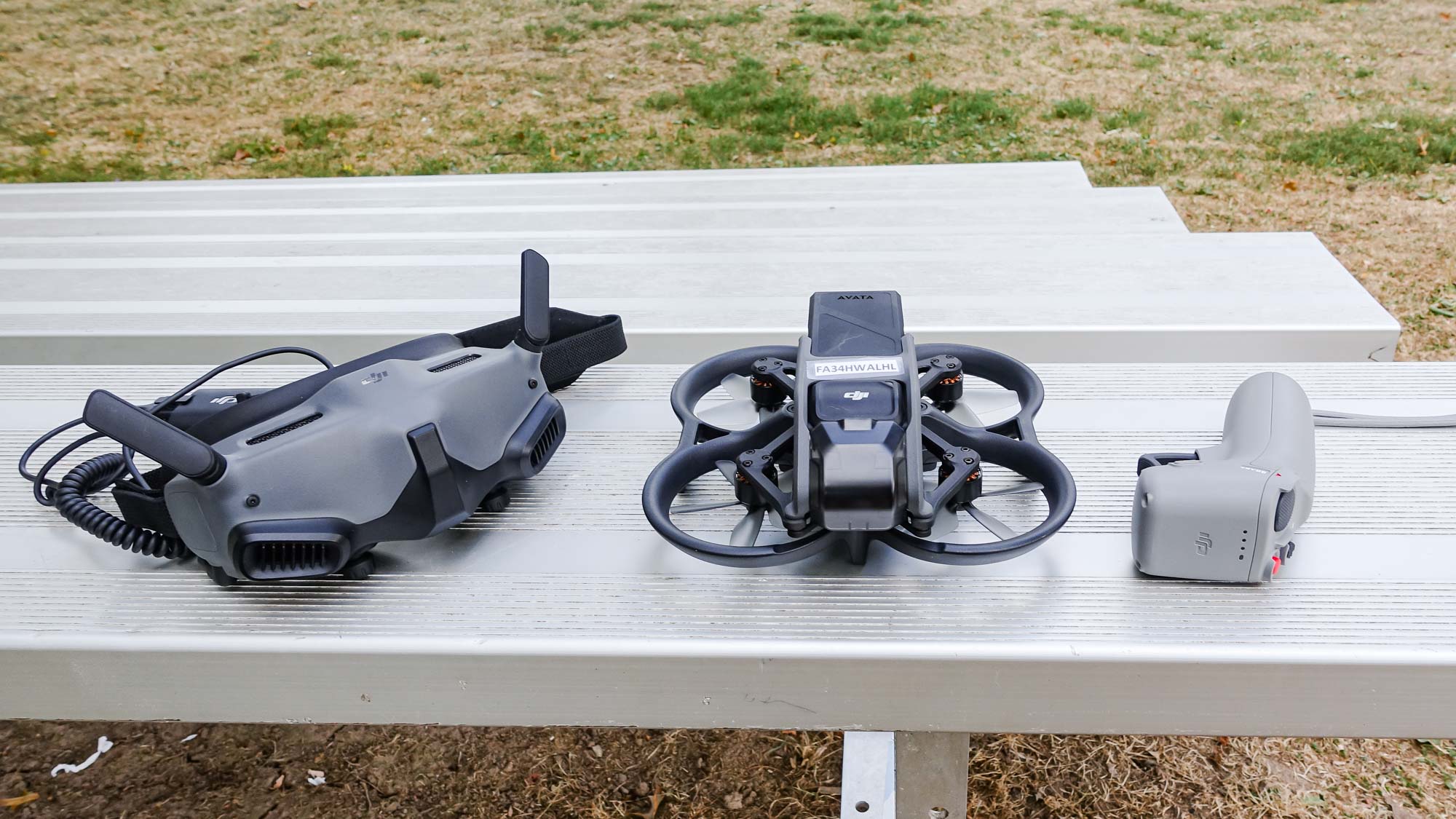
In my testing, I was able to fly the Avata for around 15 minutes before it had to head back to the barn.
DJI Avata review: Bottom line
There’s no question that the Avata is one of the best drones that’s incredibly nimble and fun to fly — which can be said for all of DJI’s drones. Unlike, say, the Air 2S or Mavic 3, which are aimed at those who want to film breathtaking scenery, the Avata is made for those who want a taste of drone racing, but don’t want to go through the process of building a drone from scratch.
To be sure, the Avata is not as nimble or as fast as drones designed specifically for racing — you’d probably get smoked at the track — but it has more than twice the flight time of racing drones, and you don’t have to worry about buying a camera, controller, and goggles separately.
In many ways, the Avata is basically a smaller version of the DJI FPV, and costs about the same. As of this writing, you can get the DJI FPV with a pair of goggles and the motion controller for $1,198 (AU$2.099) — more or less the same price as a similarly configured Avata. The fact that the Avata is more compact, and can be flown indoors, may make it the more approachable of the two.

Michael A. Prospero is the U.S. Editor-in-Chief for Tom’s Guide. He oversees all evergreen content and oversees the Homes, Smart Home, and Fitness/Wearables categories for the site. In his spare time, he also tests out the latest drones, electric scooters, and smart home gadgets, such as video doorbells. Before his tenure at Tom's Guide, he was the Reviews Editor for Laptop Magazine, a reporter at Fast Company, the Times of Trenton, and, many eons back, an intern at George magazine. He received his undergraduate degree from Boston College, where he worked on the campus newspaper The Heights, and then attended the Columbia University school of Journalism. When he’s not testing out the latest running watch, electric scooter, or skiing or training for a marathon, he’s probably using the latest sous vide machine, smoker, or pizza oven, to the delight — or chagrin — of his family.
